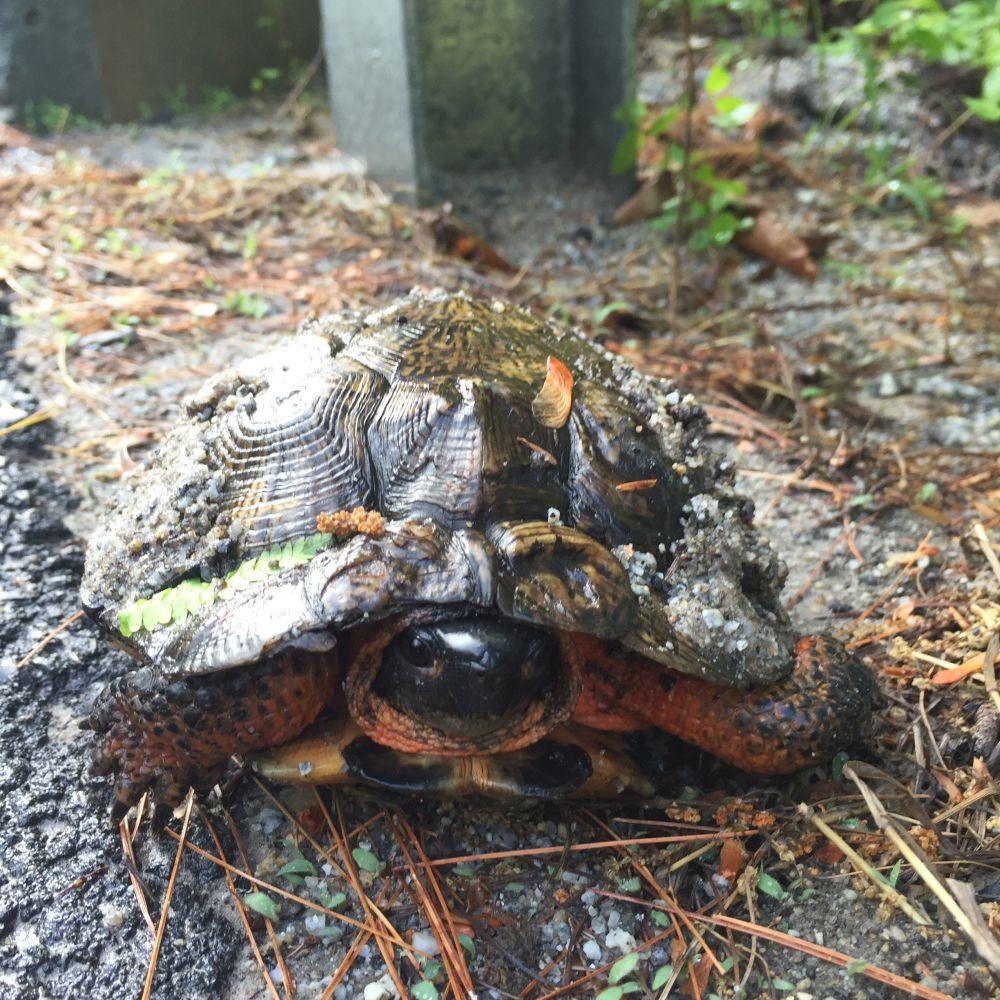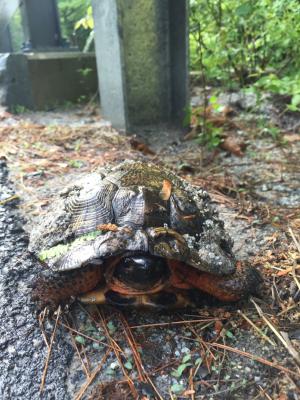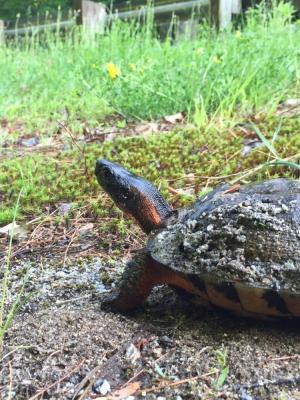Encounter with wood turtle crossing a paved highway bridge
- Tags:
- Wildlife

Nesting season is fraught with peril for many turtle species crossing NH roads. Photo Dave Anderson
The car crossing a rural NH highway bridge in front of me missed the turtle's shell by eighteen inches. I made a mental note - "turtle in the road, likely a painted turtle... not a snapper, too small."
But then 50 yards past the bridge my naturalist's mental woodland GPS said "recalculating!" That turtle was too big and high-domed shell for a commont painted turtle and typically you wouldn't expect to see a painted turtle on a paved bridge although snappers do occasionally cross roads at bridges rather than passing beneath them... I hit the brakes and pulled a u-turn and returned to the bridge.
The moment I saw the turtle again, I knew it was uncommon: a wood turtle. Long-lived and ever-more vulnerable to habitat loss, predators, illegal collecting and cars across much of New Hampshire.
Turns out living life in the slow lane can be pretty dangerous. The rapid speed of passing cars and speed of change in passing decades has taken a toll as the areas of the State which continue to provide suitable habitat continue to shrink. There are fewer and fewer areas undistubed by development and free of curious collectors - be they innocent children or more sinister turtle poachers, commercial illegal reptile collectors. In the eye of a turtle, all threats are roughly equal. This was on my mind as I approached...

These turtles require a specialized habitat: on a landscape-scale, vast tracts of intact forest growing along natural streambanks not altered with stone fill or stone rip-rap embedded within a mosaic of wetlands including forested swamps. These habitats have been compromised and lost to develpment in areas of southern New Hampshire and south along the eastern Seaboard from Massachusetts and Connecticut to Virginia.

Wood turtles must be at least 14 to 20 years old before reaching sexual maturity and starting to breed. By counting the annual growth rings - similar to the rings of a tree - in each scute of its sculpted upper shell - called the "carapace," I aged the turtle I found to be at least 20 years old. The edges of her upper shell edge were crusted with sand, revealing she had likely just been nesting near the sunny warm edge of the asphalt, near the bridge abutment.
Breaking the general rules of "Don't touch" and "Do not disturb, " I lifted her off the road apron and stepped over the shiny galvanized steel guard rail and descended the bank to a flat open gravel spot amid wild strawberries and hawkweed blossoms. I stepped away about 40 yards and waited for her head and legs to emerge and then I returned with my Smartphone camera and shot a few photos and short video clips. I played with the "slow motion" video feature but in light of her nature, that just seemed redundant!
She did oblige me with a few careful looks at me - an electric stare deep into my eyes... I spoke to her. "Lady wood turtle, please be careful when crossing roads and at bridges and on asphalt." She moved off a bit and then stopped and spun her head once more to stare hard at me. What was she thinking? Friend or foe? It gave me a shiver to see such a beautiful and rare, wild turtle - among the survivors of a race of turtles whose numbers have been greatly diminished over much of their original native range - even here in New Hampshire where forests and rivers and streams and wetland abound.

I wished her a fond "fare thee well."
That turtle is now a friend I shall never see again.
I scurried up over the guardrail and walked briskly along the road shoulder toward my car.... a dog in a neighboring yard began barking. A car whizzed past. The spell now forever broken.
